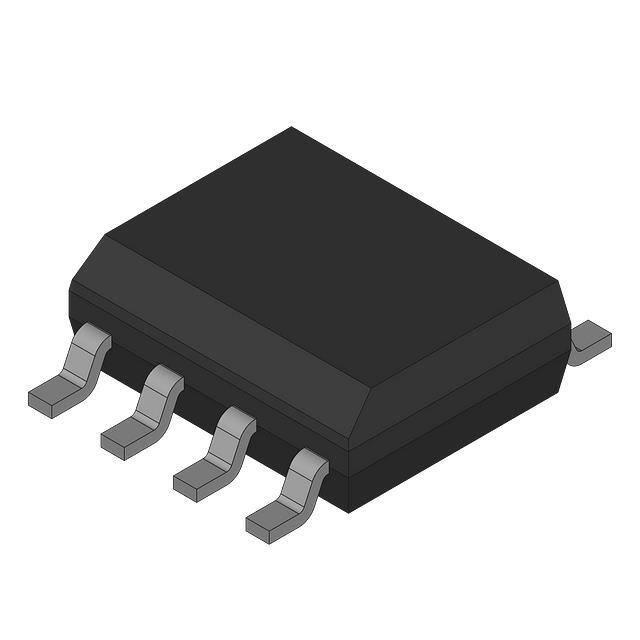A Review of Wide Bandgap Semiconductor Technology
Power electronics are evolving rapidly and wide bandgap (WBG) semiconductors are gaining popularity. Due to their high operating temperatures and higher switching voltages and frequencies, WBG technology is replacing practically all old silicon solutions. Wide bandgap semiconductors are undoubtedly a real revolution in future electronics. The most important of these, such as silicon carbide (SiC) and gallium nitride (GaN), are revolutionizing the world of electronics with their superior properties over conventional silicon-based semiconductors.
Wide Bandgap Semiconductor Introduction
Wide bandgap semiconductors are covering the entire electronics market, which until now has been dominated by silicon. SiC and GaN belong to the group of wide bandgap semiconductors and offer several advantages over conventional silicon semiconductors, whose performance has now reached its limits. They are characterized by a particularly large gap between the valence and conduction bands. The bandgap width is approximately three times greater than that of silicon, which allows higher operating temperatures and higher operating voltages to be achieved.
One of the great advantages of SiC and GaN MOSFETs is the low resistance between the source and drain channels when the device is turned on. This parameter is defined as RDS(ON) and is one of the first values that designers must pay attention to in the data sheet. This value (especially for SiC devices) is even a thousand times lower than for silicon devices. Therefore, the new WBG semiconductor materials are a significant improvement over existing technologies, with the advantages of lower power losses, greater robustness at high temperatures, and the ability to operate at higher switching frequencies and operating voltages.
Both semiconductors have applications, especially in power electronics. In general, GaN is faster than SiC and therefore switches faster. SiC has a higher breakdown voltage and a slightly lower price. In addition, they come in very common packages (such as TO-220), which allow for simple and fast replacement of existing projects. As can be seen in Figure 1, in a general sense, semiconductors are materials with a conductivity between that of conductors and insulators.
This conductivity can be adjusted by applying an electric field to one of the contacts of the device. SiC is one of the most promising WBG semiconductors, offering higher energy efficiency, lower heat generation, longer service life, and resistance to shock and vibration. GaN has a higher electron mobility and is more suitable for high-frequency applications because its gate capacitance is very low. On the other hand, SiC has a higher thermal conductivity and is well suited for low-frequency circuits and high-power applications (such as automotive and solar) that do not require high-frequency switching. However, the system still mainly operates at high voltages.

Figure 1: Bandgap widths of conductors, semiconductors and insulators.
Wide Bandgap Semiconductor Applications
Wide bandgap semiconductor devices are ideal for power electronics applications, but their use is very diverse in many areas. In addition, SiC and GaN are very effective in making efficient and compact devices. One of the main application areas today is the field of electric vehicles, which is dedicated to electric vehicles and car charging infrastructure, sometimes providing hundreds of kilowatts of power. Fields related to the production of clean energy such as wind and solar energy are also key application areas for SiC and GaN devices, whose systems often operate at huge powers (even megawatts).
Of course, the field of railway transportation is no exception, such as managing extremely powerful engines and industrial automation controlling robots and automation equipment. In more detail, wide bandgap devices are widely used in power converters, motor drives, inverters, LED lighting systems, power supplies, and communication equipment. SiC is particularly suitable for high-power applications because it can withstand much higher voltages than silicon. It is characterized by high thermal conductivity and low power losses. SiC devices are also particularly suitable for transmission systems, electric vehicles, photovoltaic systems and charging stations. With them, it is possible to give vehicles a longer range, while also charging faster and reducing the impact on the environment.
Renewable energy sources are an important area of application. For example, SiC converters can be used in solar and wind energy systems to increase the efficiency of power conversion and increase the production of renewable energy. Since high voltages are used, the cross-section and cost of cables can be reduced. Since WBG devices can switch at much higher frequencies than Si and Ge, faster and more precise devices can be made, but most importantly, smaller devices can be made, since the size of the inductive components (inductors and transformers) can be smaller.
RDS(ON) parameter
One of the most important parameters of a SiC or GaN MOSFET is the resistance of its drain-source channel during conduction, defined as RDS(ON). In silicon devices, it is strongly temperature-dependent and increases far more than proportionally. This problem also exists in SiC devices, but to a much lesser extent. GaN devices also outperform silicon devices in this regard. The RDS(ON) values of this semiconductor are also significantly lower. Not only in switching applications, but also in static applications, WBG MOSFETs have lower power losses and can operate at very high voltages and frequencies.

Figure 2: High-power load carrying very high currents.
Therefore, reducing this parameter helps to significantly reduce conduction losses. The circuit diagram in Figure 2 is an example of an application where a large current passes through a high-power load (R1). In this example, the SiC device used in static mode has the following characteristics:
Model: UF3C065030K3S
Drain-source voltage: 650V
Typical drain-source on-resistance: 27mΩ
Continuous drain current: 85A
Pulsed drain current: 230A
Power dissipation: 441W
Maximum junction temperature: 175℃
In the figure, the voltage on the gate allows the MOSFET to pass a very large current (about 32A) into the 3Ω load. During stable operation of the circuit, the following powers can be detected:
Power generated by generator V1: 3045.47W
Power consumed by load R1: 3019.17W
Power consumed by MOSFET M1: 26.30W
The powers associated with the MOSFET gate are not relevant here because they are only in the order of microwatts. Knowing the voltage on the device drain and the current flowing through the load, the RDS(ON) value can be calculated quite easily as shown below:
The newly calculated RDS(ON) value confirms the data published in the official device data sheet and is quite stable and constant under various operating conditions.
Now it is very tempting to analyze and observe the variation of RDS(ON) with various parameters. The graphs in Figure 3 highlight the trend of this parameter with other values, in particular:

Figure 3: Characterization of RDS(ON) vs. temperature, drain current, and gate voltage.
The first graph at the top, “RDS(ON) vs. Temperature”, shows the on-resistance of the device when the junction temperature is varied between -20°C and +180°C with the same load. As can be seen, the resistance is extremely low.
The second graph in the middle, “RDS(ON) vs. Drain Current”, shows the on-resistance of the device when varying the MOSFET drain current at 0°C, 70°C and 140°C. In this case, the value is very stable.
The third graph below, “RDS(ON) vs. Gate-Source Voltage,” shows the on-resistance value of the device when varying the gate drive voltage of the MOSFET. The analysis of this graph starts at 7V because lower voltage values do not turn the device on.
Lower switching losses
Since WBG semiconductors have a lower on-resistance than silicon and germanium, they dissipate less heat when conducting current. In addition, due to their higher breakdown voltage, they can withstand higher voltages without damage. High voltages and low currents allow for smaller, more efficient devices, which reduces cooling and energy consumption. Inductive components can also be much smaller due to the high frequencies involved.
Today, motor drive systems, or power supplies in general, can vary the power delivered to a load by means of pulse width modulation (PWM), thanks to the revolutionary features of WBG devices. This approach allows for high torque in the motor and is highly efficient at all speeds. However, these approaches inevitably suffer from high-frequency switching losses, since electronic switches are not ideal devices, they are characterized by non-infinite speeds and small input capacitances that prevent perfect and clean signal switching. Some studies focus on understanding the sources of these losses and the switching frequency of the system.
The energy of the losses depends on the type of circuit diagram and is directly related to the switching frequency. It is natural that the higher the switching frequency, the greater the switching losses, since the number of logic change events increases. In fact, the electronics no longer accurately "track" the switches from a certain point on. Therefore, choosing the right switching frequency is very important to optimize the overall efficiency of the power system. From Figure 4, it can be observed that the moments at which the switching losses occur correspond precisely to the rising and falling edges of the gate signal (DS channel used to turn on or off the MOSFET). In the moments after the switching of the logic level, the voltage and current transients do not occur immediately and suddenly, so at certain moments these non-zero values lead to an increase in the dissipated power of the MOSFET. In addition, as mentioned above, the loss values increase with the increase of the operating frequency, and after 30kHz, depending on the model used, these losses can reach unacceptable levels.

Figure 4: Switching losses occur at both the falling and rising edges of the gate signal and increase with increasing frequency.
Conclusion
From the above paragraphs, it can be inferred that semiconductors using WBG technology offer important advantages in terms of reliability, energy efficiency, power density, and cost reduction. SiC and GaN devices are ideal for power applications such as automotive, transportation, power conversion, and renewable energy. Using WBG semiconductors will undoubtedly reduce losses during device operation, resulting in more efficient performance and better power conversion while reducing heat dissipation. With their extensive use, the impact on the environment is greatly reduced, leading to sustainable development of energy, as they also help reduce greenhouse gas emissions.


